
TARGET 100421
Happy Birthday, Rome!
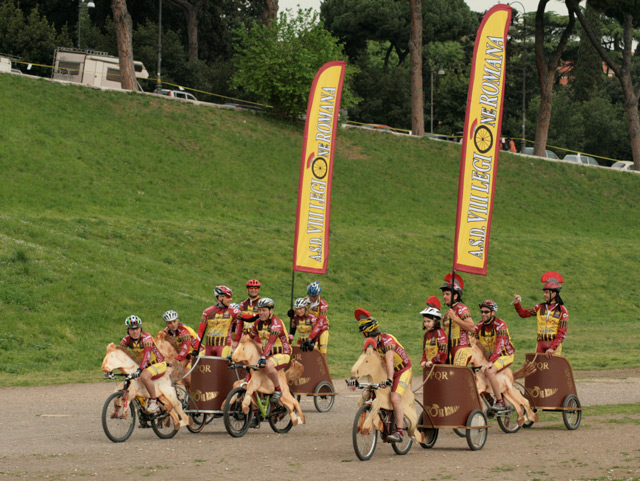
The magestic opening prominade
Well, the city of Rome is 2763 years old this year (2010), and that certainly calls for a celebration of some kind.
On April 21, of last year, the city's celebration included concerts, historic reenactments, speeches, and inaugurations. One of the historic reenactments as that of a chariot race.
Well, the reenactment was a little non-historic, though. The Circus Maximus, being no longer available for races, was replaced by a large open field. The mighty chariots were replaced by home-made ones, and the horses which pulled them were replaced by men on bicycles.
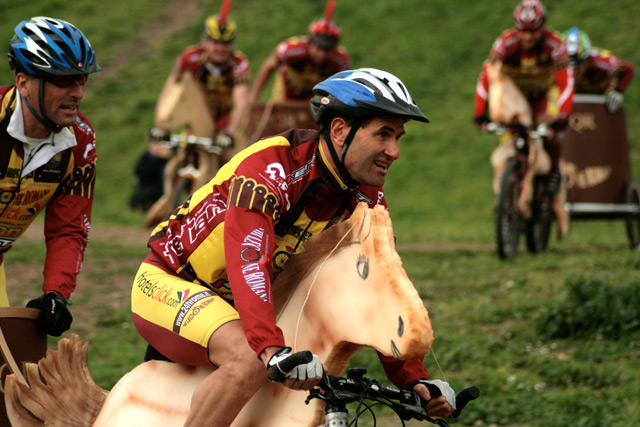
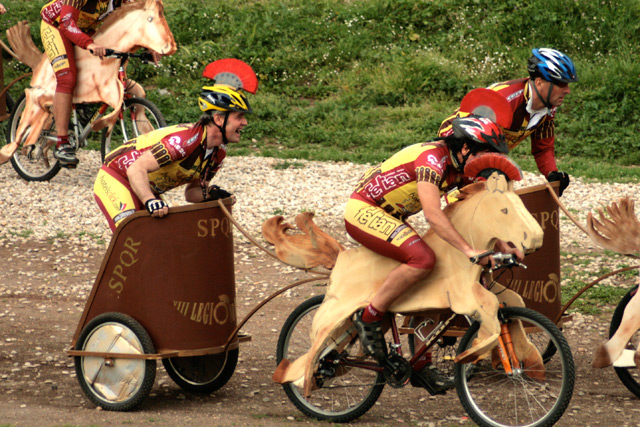
Horses and charioteers race for their lives.
The fesivities were scheduled to kick off at 10:00am with the traditional parade staged by the historic reenactment organization called the Gruppo Storico Romano.
But rain made the parade a bit less impressive and less photogenic than those of other years. The rain did hold off long enough, however, to allow the for a chariot race.
The patriotic group of bikers, sporting giallo e rosso (yellow and red) athletic gear cleverly transformed their bicycles into race horses that pulled "bigas" (the ancient Roman name for two-wheeled chariots), manned by enthusiastic charioteers. The ancient Roman chariot teams were divided by color into "the greens", "the blues", "the whites", and "the yellows". But these modern day Ben-Hurs formed two teams distinguished instead by their headgear: the "helmet heads" and the "brush heads".
Eager for a bit of Sunday-morning competition, they lined up at one end of the Circus and at the signal, the race for glory and fame began!
Each horse and chariot were required to complete three turns around the "spina" or central spine of the circus. Just as in antiquity, things got a little hairy on the tight turn opposite the starting line. Ancient sources suggest that seating in that area of the circus was desirable, as one of the attractions of the chariot races were the “shipwrecks” or crashes that occurred when chariots took the tight turn at a high speed.
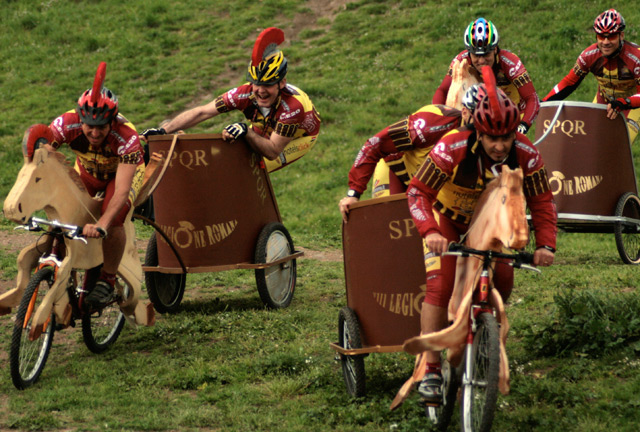
The sharp turn is where things traditionally go wrong.
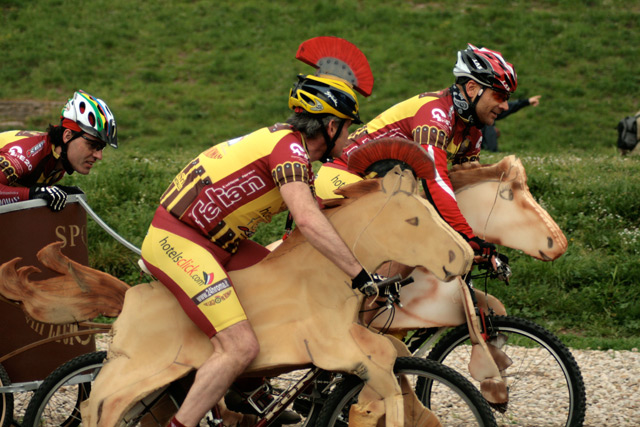
Approachng the finish line.
Though the highly trained horses and charioteers of today’s race managed to navigate the turn without any crashes, spectators were still pleased as the terrain is rough at that end of the Circus Maximus and thus it gave the racing teams an opportunity to exhibit their superior skills.
At the finish, a helmet-head (no doubt aided by the aerodynamic design of his headgear) nosed ahead of the leading brush-head chariot, taking the prize!
FEEDBACK MAP
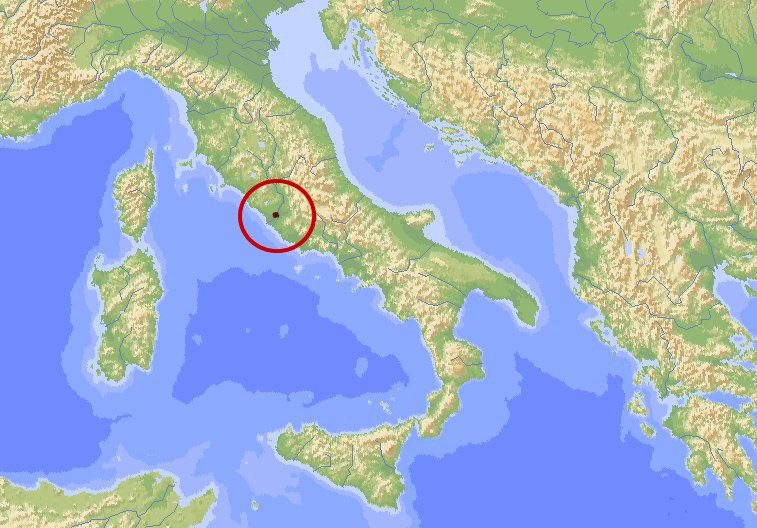
To learn more about The new Roman chariot races, as well as the ancient sport, take a look at the following web sites:
Wikipedia